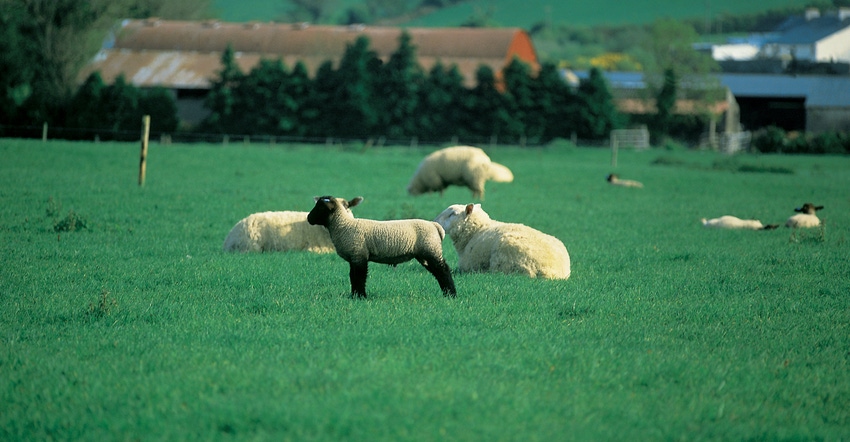December 13, 2018

Listeriosis is an important infectious disease of sheep and goats. It most commonly causes encephalitis but is also capable of causing blood infections and abortion.
Listeriosis is caused by the bacterium Listeria monocytogenes and is commonly seen in cooler climates. These bacteria can be found in the soil, food sources and even the feces of healthy animals. Most commonly, this disease of sheep and goats is observed as a result of feeding moldy or spoiled hay or silage. It’s possible for sheep and goats to become infected without feeding moldy or spoiled hay or silage, as it is also found in the environment. The bacteria are very hardy and are common in soil.
Possible locations of Listeria monocytogenes bacteria:
• silage that’s not fermented (not acidified) properly, is put up too dry or not compacted tight enough to protect it from the air
• round bales of hay that have started to rot
• feed bunks that are not cleaned regularly, and in which feces and wet feed leftover accumulate and ferment
• rotting (decaying) woody debris
• manure
• milk, urine and drainage of the eyes and nose of infected animals
Environmental and fecal contamination are more common sources of the disease than silage in sheep and goats, because most are never fed silage.
Michigan State University Extension recommends not using silage for small sheep flocks and goat herds as the feeds will spoil before they can be consumed and possible listeriosis infections can result.
Symptoms of listeriosis include depression, loss of appetite, fever, lack of coordination, salivation, facial paralysis and circling. The disease is more common in animals 1 to 3 years of age than it is in older animals.
The abortion form of listerosis usually shows no other symptoms and can only be diagnosed by laboratory analysis. The onset of the encephalitic form is usually very fast, and it causes death in 24 to 48 hours after symptoms appear. Symptoms include circling in one direction, high fever, lack of appetite, red tissues around the eyes (usually with blindness) and depression. Affected animals may have a droopy ear, drooping eyelid and saliva running from limp lips on one side of the face caused by a partial paralysis. When near death, the animal will lie down and may have convulsions. A diagnosis can only be confirmed in a diagnostic laboratory, but isolation of the organism can be difficult.
Recovery is rare, but it is possible with early aggressive antibiotic treatment and supportive care of the affected animals. There are no effective treatments for small ruminants, and they usually die after infection. Large doses of oxytetracycline or penicillin G may help in some cases.
Steps for prevention or to minimize associated risks:
• Recently introduced animals should be considered suspect as carriers.
• Infected animals should be isolated from the rest of the herd or flock.
• Floors, pens, sheds, feed bunks, mineral feeders, etc. should be thoroughly cleaned and disinfected.
• If several animals are affected and silage or round bales of hay are being fed, their use should be discontinued until they can be ruled out as a source of contamination.
Source: MSUE
You May Also Like




